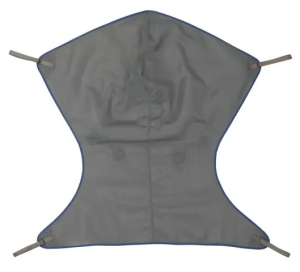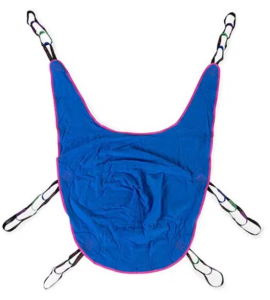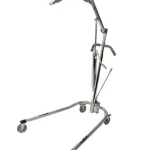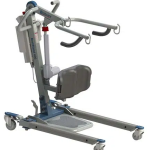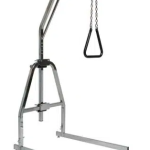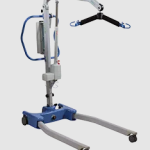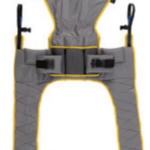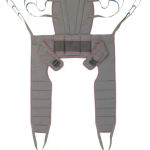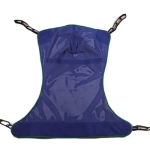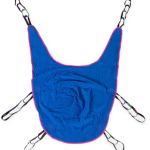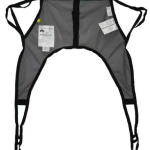Patient Transfer Lifts & Slings Buying Guide
Welcome to the Patient Transfer Lifts & Slings Buying Guide. In this comprehensive guide, we will explore different types of patient lifts and slings, including hydraulic and electric patient lifts, trapeze equipment, sit-to-stand aids, full body slings, mesh slings, and divided leg slings. Our aim isto help you make an informed decision when purchasing equipment to assist with safe patient transfers and mobility.
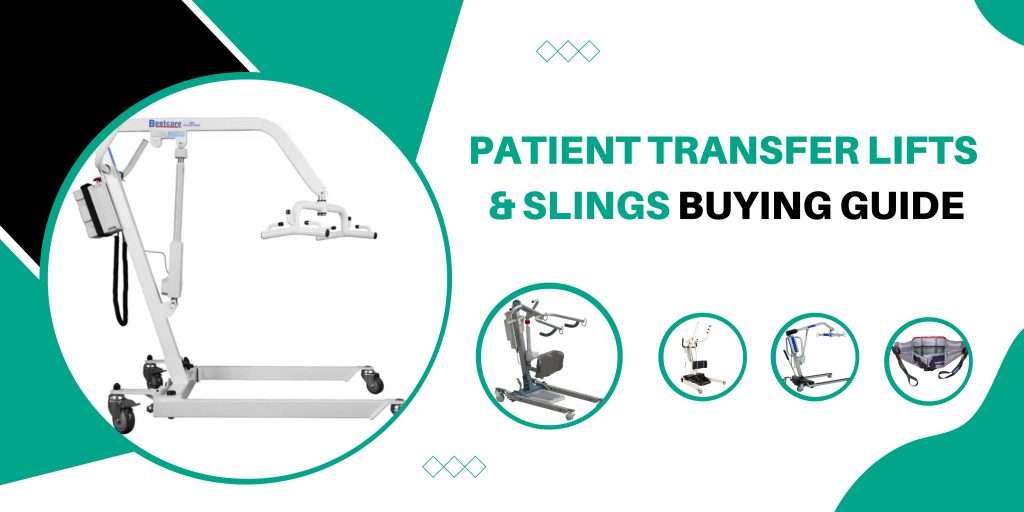
Quick Overview:
- What are Patient Transfer Lifts?
- Primary purpose of a patient transfer lift
- Types of Patient Lifts & Slings
- What are Patient Transfer Slings?
- Primary purpose of Patient Transfer Slings
- Types of Patient Transfer Slings
- Factors to Consider before making a purchase
- Our Top 5 Fast Selling Patient Transfer Lifts You May Buy
- Our Top 5 Fast Selling Patient Transfer Slings You May Buy
- Conclusion
What are Patient Transfer Lifts?
A patient transfer lift, also known simply as a patient lift or transfer lift, is a mechanical device used to assist caregivers in moving individuals with limited mobility from one place to another. These lifts are designed to enhance safety and comfort during transfers, both for the individuals being moved and for the caregivers performing the transfers. Patient transfer lifts are widely used in various settings, including homes, hospitals, nursing homes, and rehabilitation facilities.
Primary purpose of a patient transfer lift:
The primary purpose of a patient transfer lift is to reduce the physical strain on caregivers and minimize the risk of injury to both the caregivers and the individuals being transferred. These lifts come in different types and configurations to accommodate various mobility levels and transfer needs. These lifts are designed to enhance safety, comfort, and efficiency during transfers, benefiting both the individuals being moved and the caregivers assisting with the transfers. Patient transfer lifts are versatile tools that cater to a variety of scenarios and environments. By utilizing these lifts, caregivers can ensure the well-being of individuals with limited mobility while also promoting their independence and maintaining their dignity.
Patient transfer lifts are used for a wide range of scenarios, such as:
1. Individuals with Mobility Challenges:
Patient transfer lifts are essential for individuals who have difficulty moving independently due to various mobility challenges. This includes people with disabilities, seniors with reduced mobility, individuals recovering from surgeries or injuries, and those with medical conditions that limit their movement.
2. Caregivers and Healthcare Professionals:
Caregivers, whether family members or healthcare professionals, often face physical strain and injury risks when manually lifting or transferring individuals with limited mobility. Patient transfer lifts alleviate this strain, making transfers safer and more manageable for caregivers.
3. Home Care Environments:
In-home care settings, patient transfer lifts provide a practical solution for moving individuals between different locations, such as beds, chairs, wheelchairs, and toilets. They allow caregivers to provide better care without the risk of injury.
4. Healthcare Facilities:
Hospitals, nursing homes, rehabilitation centers, and long-term care facilities benefit from patient transfer lifts to efficiently and safely move patients within the facility. These lifts enable healthcare professionals to carry out transfers with minimal physical effort.
5. Transfers to/from Wheelchairs:
Patient transfer lifts are especially valuable for transferring individuals to and from wheelchairs. They make the process smoother, reducing the risk of falls or accidents during the transfer.
6. Transfers to/from Beds:
Lifting and moving individuals in and out of beds can be challenging and potentially unsafe without proper equipment. Patient transfer lifts simplify this process and reduce strain on caregivers.
7. Bathroom and Toileting Transfers:
Transferring individuals to and from the bathroom or toilet can be complex and risky. Patient transfer lifts, especially those with specialized slings, facilitate safe and dignified toileting assistance.
8. Individuals with Limited Weight-Bearing Ability:
For individuals who cannot bear weight on their legs or need significant assistance to do so, patient transfer lifts offer the support needed for transfers.
9. Rehabilitation and Therapy Settings:
In rehabilitation and therapy settings, patient transfer lifts aid in helping individuals practice movements and weight-bearing activities safely.
10. Preventing Falls and Injuries:
Patient transfer lifts play a crucial role in fall prevention. They reduce the risk of accidents and injuries during transfers, protecting both the individual and the caregiver.
Types of Patient Lifts & Slings
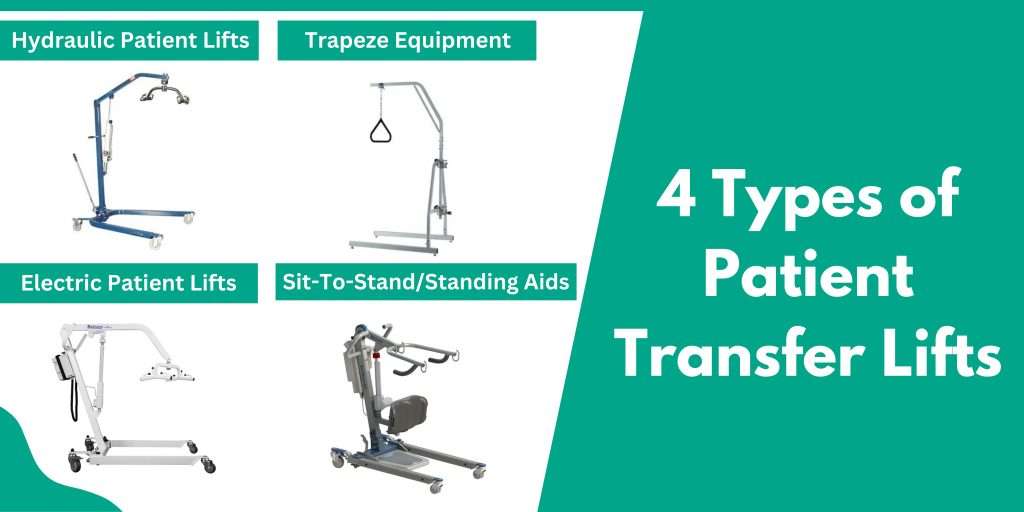
When it comes to assisting individuals with mobility disabilities, patient lifts and slings play a crucial role in maintaining their safety, comfort, and independence. In this section, we will delve into various types of patient lifts and slings designed specifically for those with mobility challenges.
|
Hydraulic Patient Lifts |
Electric Patient Lifts |
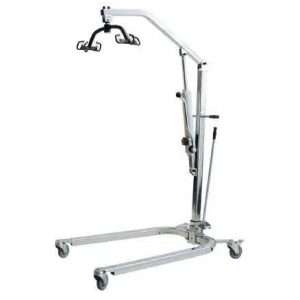 |
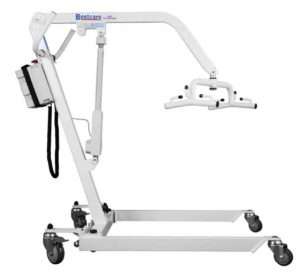 |
| Hydraulic patient lifts, also known as Hoyer Lifts, are designed to assist individuals with limited mobility in transferring from one surface to another. They are manually operated using a hydraulic pump system. These lifts use fluid pressure to elevate and lower the patient. They are versatile, durable, and do not require an external power source.
Ideal Use: Hydraulic patient lifts are ideal for home and caregivers who want a reliable and cost-effective lifting solution. They are versatile and can be used to transfer individuals from beds, chairs, wheelchairs, or even the floor where power sources might be limited or inaccessible. |
Electric patient lifts are powered by electricity and feature a motor for raising and lowering the patient. They are easy to use and require minimal physical effort from the caregiver.
Ideal Use: Electric patient lifts are recommended for caregivers who want a more convenient and effortless lifting experience. They are suitable for frequent transfers and situations where caregivers may have limited physical strength. |
|
Trapeze Equipment |
Sit-To-Stand/Standing Aids |
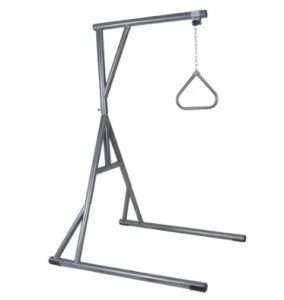 |
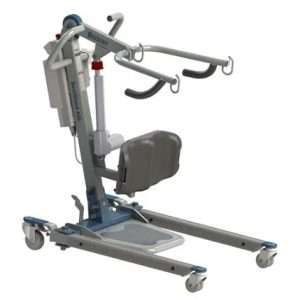 |
| Trapeze equipment consists of a triangular bar hanging above the bed. It allows patients to reposition themselves using their upper body strength.
Ideal Use: Trapeze equipment is beneficial for patients who have some upper body strength and mobility. It is often used in home care settings to aid in changing positions, sitting up, and moving in and out of bed. |
Sit-to-stand aids are designed to help patients transition from a sitting to a standing position. These aids provide support and stability during the process.
Ideal Use: Sit-to-stand aids are perfect for patients who can bear some weight on their legs but may struggle with full weight-bearing. They promote independence and can be used in rehabilitation and home care scenarios. |
What are Patient Transfer Slings?
Patient transfer slings, also known simply as transfer slings, are specialized pieces of equipment designed to work in conjunction with patient transfer lifts. These slings are used to safely move individuals with limited mobility from one surface to another, such as from a bed to a wheelchair or from a wheelchair to a toilet. Transfer slings provide support, stability, and comfort during the transfer process, benefiting both the individual being transferred and the caregivers performing the transfer.
Primary purpose of Patient Transfer Slings:
Patient transfer slings are ideal for a wide range of scenarios involving individuals with limited mobility. These specialized slings are designed to work in conjunction with patient transfer lifts, enhancing safety, comfort, and efficiency during transfers. Patient transfer slings are particularly valuable in the following situations:
1. Individuals with Limited Mobility:
Patient transfer slings are essential for individuals who have difficulty moving independently due to various mobility challenges. This includes people with disabilities, seniors with reduced mobility, individuals recovering from surgeries or injuries, and those with medical conditions that limit their movement.
2. Transfers Between Surfaces:
These slings are especially useful when transferring individuals from one surface to another, such as from a bed to a wheelchair, a wheelchair to a commode, or from a chair to a standing position.
3. Preventing Falls and Injuries:
Patient transfer slings play a significant role in fall prevention. They provide the necessary support and stability to reduce the risk of accidents and injuries during transfers.
4. Rehabilitation and Therapy:
In rehabilitation settings, patient transfer slings are used to assist individuals during therapeutic exercises, transfers, and mobility training.
5. Caregivers and Healthcare Professionals:
Caregivers and healthcare professionals benefit from patient transfer slings by reducing the physical strain and injury risks associated with manual lifting and transferring of individuals with limited mobility.
6. Home Care Environments:
Patient transfer slings are essential in home care settings where family members or caregivers need to assist individuals with limited mobility. These slings enable safer and more manageable transfers at home.
7. Healthcare Facilities:
Hospitals, nursing homes, rehabilitation centers, and long-term care facilities benefit from patient transfer slings to efficiently and safely move patients within the facility.
8. Individuals with Weight-Bearing Limitations:
For individuals who cannot fully bear weight on their legs, patient transfer slings provide the necessary support for safe transfers.
9. Toileting Assistance:
Commode slings, a type of patient transfer sling, are particularly valuable for assisting individuals with toileting needs. They allow for dignified and safe transfers to and from commodes or toilets.
10. Individuals with Special Needs:
Transfer slings come in various specialized designs to cater to individuals with unique needs, such as amputee slings for those with limb amputations.
Types of Patient Lifts & Slings
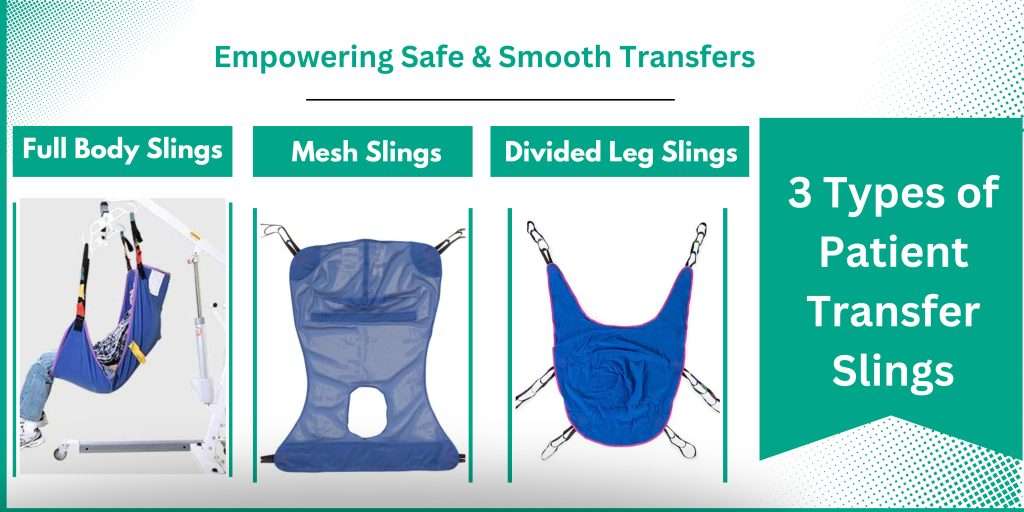
When it comes to assisting individuals with mobility disabilities, patient lifts and slings play a crucial role in maintaining their safety, comfort, and independence. In this section, we will delve into various types of patient lifts and slings designed specifically for those with mobility challenges.
|
Full Body Slings |
Mesh Slings |
|
|
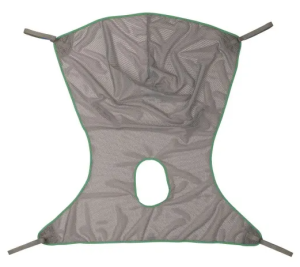 |
|
Full Body slings support the entire body, including the head and neck. They are used with patient lifts to facilitate transfers while evenly distributing the patient’s weight. Ideal Use: Full body slings are suitable for patients with limited mobility or those who cannot bear weight on specific body parts. They provide full support and are commonly used in hospitals, nursing homes, and home care. |
Mesh slings are made from a breathable fabric that allows air circulation and prevents moisture buildup. They provide comfort and are suitable for extended use.
Ideal Use: Mesh slings are great for patients with sensitive skin or those who are prone to sweating. They are commonly used in warm environments or for patients who require longer periods of sling use. |
|
Divided Leg Slings |
|
|
| Divided leg slings have separate leg compartments, allowing for more comfortable and controlled transfers. They offer extra support to the leg area.
Ideal Use: Divided leg slings are ideal for patients with limited leg mobility, hip issues, or those who need to be transferred to a seated position. They enhance patient comfort and safety during transfers. |
Factors to Consider before making a purchase:
- Patient Needs: Assess the patient’s mobility, weight-bearing capacity, and any specific medical requirements.
- Caregiver Comfort: Choose equipment that suits the caregiver’s physical abilities and preferences.
- Setting: Consider whether the equipment will be used at home, in a healthcare facility, or other environments.
- Maintenance: Check the cleaning and maintenance requirements of the equipment and slings.
- Safety Features: Look for features like locking mechanisms, stability-enhancing designs, and weight capacity.
Training: Ensure that caregivers are adequately trained in using the equipment safely.
Our Top 5 Fast Selling Patient Transfer Lifts You May Buy
Our Top 5 Fast Selling Patient Transfer Slings You May Buy
Conclusion:
By understanding the different types of patient lifts and slings available, along with their ideal uses, you can confidently select the right equipment to meet your needs. For a wide range of patient lifts and slings, visit reputable medical supply stores like Top Medical Mobility or consult with healthcare professionals for personalized recommendations.




